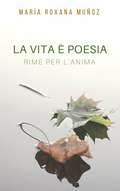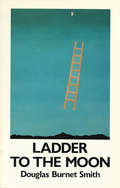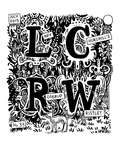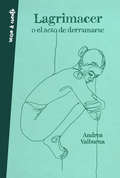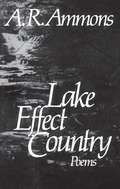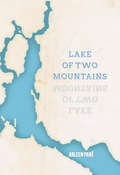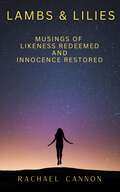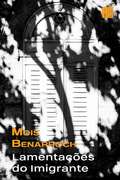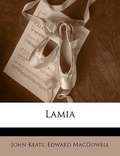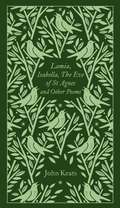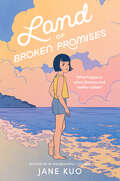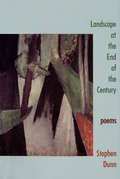- Table View
- List View
La vita è poesia. Rime per l'anima
by Maria Roxana MuñozLa vita è poesia: Rime per l'anima di Maria Roxana Muñoz rac un raccolta di poesie che cerca di collegare il lettore con i propri sentimenti. La vita è poesia: Rime per l'anima Dobbiamo recupare la sensibilità che vive nascosta sotto le paure. Quelli che ci impediscono di fluire con i nostri sentimenti. Rime per l'anima, della vita è poesia, è un incontro con la nostra stessa essenza. La libertad de los sentimientos en el interior, en el camino de la letra de alguien más.
La vita è poesia: dove iniziano le emozioni
by Maria Roxana MuñozLa vita è poesia: dove iniziano le emozioni di Maria Roxana Muñoz È una raccolta di poesie che cerca di collegare il lettore con i propri sentimenti. La vita è poesia: dove iniziano le emozioni Abbiamo bisogno di connetterci con noi stessi, capire che siamo esseri senzienti, che la sensazione non è una debolezza, è una forza. La vita è poesia, il sentimento incarnato nelle lettere, il giorno per giorno espresso nei versi, il cuore verso il mondo. Stanze che ci danno un giro dell'anima, che siamo e spesso dimentichiamo. L'opportunità di essere, il raggiungimento di ciò che portiamo dentro, per nutrire il nostro spirito, quell'energia che vibra di bellezza. Perché la vita è poesia
La voz en mi cabeza
by Rosa Cristina Rois GneccoCada recuerdo que visita tu corazón te acerca a esa voz que te dice quién eres. Cuando tu voz es más fuerte que tu miedo, su única misión es ser escuchada. El ruido de fondo altera tus sentidos. No escu chas nada. Son mil voces las que hablan en tu cabeza. Muchas se quedan allí por largo tiempo. Solo una le habla a tu corazón . Si has aprendido a escuchar con él, sientes tu verdadera voz. Esa voz esboza lo más secreto de tu ser y publica aquello que es exclusivo de tu intimidad. La voz en mi cabeza tiene cuarenta y dos años. Es una conversación consciente entre el conoci miento interior y el mundo exterior. Es un diálogo sobre el día a día, el miedo, los sueños, la intuición, el amor, sus capr ichos y tú. La voz en mi cabeza reconoce mi vida y mis silencios. No es una historia y tampoco soy yo. Es una voz. Es mía yes tuya.
Lacunae: 100 Imagined Ancient Love Poems
by Daniel NadlerLacunae, Daniel Nadler's debut collection, is an exercise in poetics of vital import. In it, Nadler imagines himself into those moments of unintelligibility--that blank space in between things--where constraint and expansion coincide. These poems, translations of work that does not otherwise exist, are intended to fill the invented or actual lacunae in manuscripts of classical Indian poetry. When faced with such ellipses, like where a few decisive hieroglyphs have worn off a wall, he infers and reconstructs the flora, fauna, and pleasures of an ancient world. "Like the wind that gusts coastal pines toward the water / sleep bends me toward my lover / and I cannot drink from her": Nadler's is a project of constant negotiation. He attends to impulses of restoration and conservation, in turns. From this tension arises verse of simplicity and clarity of vision, imbued with that trembling quality of new life "luminous and half-naked." Lacunae, deeply felt and gnomically wise, dares to pave a poetic landscape all its own, the work of a remarkable new poet with enormous ambition and ability.
Lacunae: New Poems
by Scott CairnsNew poetry from Scott Cairns on containing the uncontainableOften, when speaking of what he has called the poetic operation of language, Scott Cairns has characterized that event as our "glimpsing an indeterminate, inexhaustible enormity within a discrete space." This is the poet's continuing fascination with lacunae, those spaces, those openings that offer more within than appearances can register from outside the ostensible covert of their terms. Cairns is here focused upon how an image, a word, or—in the case of the Theotokos—a womb can contain the uncontainable. As Orthodox hymnography avers, she is more spacious than the heavens. So, too, the poet suggests, in its own, modest way, the poem might give birth to more, and more, and yet more than even the poet supposes.
Ladder to the Moon
by Douglas Burnet SmithIn his fifth book of poetry, Douglas Burnet Smith tunes his eye and ear closely to the world, conscious of those points where the everyday blossoms into fierce magic. The title sequence is a deftly-rendered homage to the work of Georgia O’Keeffe.
Lady Churchill's Rosebud Wristlet No. 33
by Kelly Link Gavin J Grant Michael J. DelucaGuest edited by Michigan writer Michael J. DeLuca, LCRW #33 approaches its theme of humanity's relationship with the earth with a little humor, a touch of horror, and seventeen different kinds of understanding.<P><P> Includes multiple award winner Sofia Samatar, Nebula and Shirley Jackson award nominee Carmen Maria Machado, and World Fantasy Award nominee Christopher Brown among others.
Lady of the Beasts: Poems
by Robin MorganRobin Morgan&’s second collection of poems is a rich tapestry of female experience, both literal and mythic Daughter, wife, mother, lover, artist, and even priestess are all here in shorter lyrics that cluster around four subjects: blood ties, activism and art, love between women, and archetypes. But Morgan surpasses the political grief and rage she delineated in Monster, her acclaimed first book of poems—especially in the four major metaphysical poems here: &“The City of God,&” balancing grace and despair; &“Easter Island,&” on the ironies of transcendence in embattled love; &“The Network of the Imaginary Mother,&” which became a virtual anthem of the women&’s movement; and &“Voices from Six Tapestries,&” inspired by the famous Lady and theUnicorn weavings that hang in the Musée de Cluny in Paris. Themes of familial love and hurt, mortality, survival, and transformation inform the poems collected here as the author weaves a wise and powerful self into being. Lady of the Beasts is Robin Morgan at her most lyrical yet.
Lagrimacer o el acto de derramarse
by Andrea ValbuenaUn poemario que habla de lo necesario de las despedidas y de la tristeza como acto natural. Un grito que se rebela ante la necesidad actual que nos han impuesto de la felicidad perpetua. «Cada uno de estos poemas es una lágrima. Pequeñas cápsulas redondas y saladas de versos que también se derraman, que brotan, que caen y se escapan de un ojo o a través de un lapicero sujeto por una mano temblorosa. Una mano que escribe y llora, y sabe que de la tristeza también nacen cosas, buenas o malas, pero frecuentemente bellas». La poeta Andrea Valbuena hace en estas páginas un alegato a favor de la tristeza como estado natural y necesario y del duelo como mercromina para el dolor, y nos invita a volver a dar valor a la palabra «lagrimacer» y al acto que denota. La palabra como rebelión y como espejo, llorar sin vergüenza para poder volver a reír. La crítica ha dicho...«Empezó publicando en las redes y ahora es uno de los referentes de la nueva poesía.»ABC «Escribe versos para las mujeres que necesitan recordarse, que son hermosas y eligen quererse a sí mismas antes que a cualquier persona.»El Mundo
Lakdhas Wikkramasinha
by Lakdhas WikkramasinhaBold and original poetry from a leading figure of an underrepresented anglophone tradition.Lakdhas Wikkramasinha is one of the major Sri Lankan poets of the twentieth century. Fearlessly political, &“powerful and angry&” (as Michael Ondaatje calls him in his memoir Running in the Family), Wikkramasinha has influenced generations of writers in Sri Lanka. Yet his work, originally self-published in limited editions, has long been inaccessible. This new volume, edited by Aparna Halpé and Ondaatje, is the first to offer a comprehensive selection of Wikkramasinha&’s English poetry drawn from the original sources, most of which have never been reprinted. It is also the first to contain a representative selection of the poetry that Wikkramasinha composed in Sinhala, now translated into English by Udaya Meddegama. An accomplished bilingual writer, deeply engaged with Sanskrit and Sinhalese traditions, Wikkramasinha also reveals himself to be a modernist shaped by his reading of Federico García Lorca and Osip Mandelstam, bringing a lyric style of great rhythmic force and imagistic compression to bear on his postcolonial present, as well as on the colonial and precolonial past.
Lake Effect Country: Poems
by A. R. AmmonsLake Effect Country is the newest collection by the poet whom the critic Josephine Jacobsen has described as "a formidable and outstandingly original contributor to the best of American poetry." Presenting the National Book Critics Circle Award in Poetry for 1981 to Ammons's A Coast of Trees Richard Locke, editor-in-chief of Vanity Fair, said, in part: "In the thirty years since A. R. Ammons published his first poems, he has fashioned a body of work that achieves a rare amplitude, specific gravity, and high seriousness. He is a poet of the American Sublime—a nature poet, as we say—standing in the tradition of Wordsworth, Emerson, and Whitman. Amidst the hue and cry of contemporary poetical factions, his work pursues its own integrity: clear, unblinking in its self-knowledge, remarkable for its radiant density of argument and feeling."
Lake of Two Mountains
by Arleen ParéLake of Two Mountains, Arleen Paré's second poetry collection, is a portrait of a lake, of a relationship to a lake, of a network of relationships around a lake. It maps, probes and applauds the riparian region of central Canadian geography that lies between the Ottawa and the St. Lawrence Rivers. The poems portray this territory, its contested human presences and natural history: the 1990 Oka Crisis, Pleistocene shifts and dislocations, the feather-shaped Ile Cadieux, a Trappist monastery on the lake's northern shore. As we are drawn into experience of the lake and its environs, we also enter an intricate interleaving of landscape and memory, a reflection on how a place comes to inhabit us even as we inhabit it.
Lambi Barish (A Long Spell of Rain)
by Balraj KomalThis book is an English translation of "Lambi Barish", a volume of selected poems by the famous Urdu poet Balraj Komal. Translated from Urdu by the poet, Balraj Komal.
Lambs & Lilies: Musings of Likeness Redeemed and Innocence Restored
by Rachael CannonMy darlings, I write with pleromic fingertips, dipped in rainbows, lacing my heart's words with gilded grace and luscious love. I tell of the all-embracing love of Abba in visions, prayers, allegories, reflective verse, and aphorisms in mystical prose and poetry. Oh, my sweets, his love has deeply affected me. My fingertips are full of God and oozing images of original likeness redeemed, innocence restored, inclusion, and effortless Union. I shall attempt to outline Abba's dear face; read and see yourself in the mirror of his eyes. Here, I shall dare to tell tales so vibrant and filled with love and life that any reader may easily be swept into God's ecstatic and ever-loving embrace. May we come to know that we are the wonder of wonders. These musings are Spirit-entwined, whispering, I love you, I love you, I love you, in every letter and reminding us that we have always been in Christ, our lovely Lord. May they usher all into the awareness of Union and of our original likeness redeemed and blueprint innocence restored. Oh, that we are enraptured by unconditional love again and again. I love you, St. Rachael of the Lamb
Lamentações do imigrante
by Mois Benarroch Jean Pierre BarakatO livro contém poemas autobiográficos do autor que relatam suas várias vivências e sua experiência de se sentir como um imigrante em seu próprio país. O livro original foi publicado em novembro de 2011.
Lamia
by John KeatsThough not one of John Keats' very best poems, Lamia is a major work and essential for anyone interested in him. It has his signature unparalleled beauty but is also unusually thoughtful, with intriguing musings on illusion vs. reality and the nature of love, beauty, and art. Keats' lament about empiricism destroying natural wonder has heavily influenced everyone from Edgar Allen Poe to Richard Dawkins, and Lamia remains central to the art/nature vs. science debate. The story is also interesting in itself; Keats brings a fantasy world vividly to life, draws us in emotionally, and even has a devastating ending. Finally, the poem is impressive technically, showing Keats' growing couplet mastery. One should certainly read his best-known works first, but this should be an early stop; that said, the fact that it is virtually every Keats collection makes a standalone very hard to justify. The important thing at any rate is to read it in some form.
Lamia, Isabella, The Eve of St Agnes and Other Poems (Penguin Clothbound Poetry)
by John KeatsIn the summer of 1820, Keats published this collection, his third and final volume of poetry. A few months earlier, he had started coughing up blood; the following February, he would die of tuberculosis in Rome, aged just twenty-five. This volume contains his greatest work, written in an astonishing burst of creative genius in 1819. It includes 'Lamia', his tale of love and betrayal in ancient Corinth; the haunting medieval romance of 'The Eve of St Agnes'; and his six famous odes, now considered among the most famous verse in the language.
Lancelot: The Knight of the Cart
by Burton Raffel Chrétien De Troyes<p>The romantic poems of twelfth-century French poet Chretien de Troyes were of immense influence across Europe - widely imitated, translated, and adapted. Giving rise to a tradition of story-telling that continues to this day, the poems established the shape of the nascent Arthurian legend. In this outstanding new translation of Lancelot, Burton Raffel brings to English-language readers the fourth of Chretien's five surviving romantic Arthurian poems. This poem was the first to introduce Lancelot as an important figure in the King Arthur legend. <p>Lancelot tells of the adulterous relationship between the knight and his mistress, Guinevere, the wife of King Arthur. Thematically this poem differs from Chretien's other romances - Lancelot and Guinevere's love is a serious crime against their king, Lancelot casts aside his knightly ideals and reputation for the sake of his beloved, and Arthur is endowed with a weaker personality. <p>Raffel has created an original three-stress metric verse form that captures Chretien's swift-paced narrative and lively, sparkling Old French. A consummate translator, Raffel enables the modern reader and the reader who is unfamiliar with French to appreciate the beauty of Chretien's original.</p>
Lances All Alike
by Suzanne Zelazo<P>Modernist poet-painters Mina Loy and Baroness Elsa von Freytag-Loringhoven had many friends in common (including Djuna Barnes and Marcel Duchamp), yet there is no record that the two ever met. Their non-relationship presents a curious “absent presence” in modernist history. <P>Zelazo weaves lines of poetry by both women into an imaginary conversation, exploring the way their work has been suppressed, stitched, spliced, and edited by male editors and arbiters of taste.
Land of Broken Promises
by Jane KuoTaiwanese immigrant Anna and her family make a shocking discovery that puts their American dreams at risk in this searing companion to In the Beautiful Country. <P><P> After a rocky first year, Anna’s family has settled into life in California—their small restaurant is even turning a profit. Then her parents make a shattering discovery: Their visas have expired. <P><P> Anna’s world is quickly overwhelmed by unfamiliar words like “undocumented” and “inequality.” She longs to share with a friend the towering secret that looms over every aspect of her life, but her parents strictly forbid her from telling anyone. <P><P> As Anna grapples with the complexities of being undocumented, the strain that it places on her family, and the loneliness of keeping it all to herself, she has to wonder—if America is the promised land, why does everything she’s hoped for feel like a lie?
Land of the Cranes
by Aida SalazarNine-year-old Betita knows she is a crane. Papi has told her the story, even before her family fled to Los Angeles to seek refuge from cartel wars in Mexico. The Aztecs came from a place called Aztlan, what is now the Southwest US, called the land of the cranes. They left Aztlan to establish their great city in the center of the universe-Tenochtitlan, modern-day Mexico City. It was prophesized that their people would one day return to live among the cranes in their promised land. Papi tells Betita that they are cranes that have come home.Then one day, Betita's beloved father is arrested by Immigration Customs Enforcement (ICE) and deported to Mexico. Betita and her pregnant mother are left behind on their own, but soon they too are detained and must learn to survive in a family detention camp outside of Los Angeles. Even in cruel and inhumane conditions, Betita finds heart in her own poetry and in the community she and her mother find in the camp. The voices of her fellow asylum seekers fly above the hatred keeping them caged, but each day threatens to tear them down lower than they ever thought they could be. Will Betita and her family ever be whole again?
Land of the Reed Plains: Ancient Japanese Lyrics from the Manyoshu
by Kenneth Yasuda Sanko InoueThis collection of Japanese poetry and paintings is a wonderful addition to the collection of any enthusiast of Japanese poetry or culture.<P><P>Land of the Reed Plains presents a rare and beautiful combination of Japanese lyric genius and artistic mastery. The poetry comes from the Manyoshu, Japan's earliest and greatest anthology and masterpiece of world literature, ably translated by Kenneth Yasuda. The 100 paintings that accompany the poems, each in full color, are the work of the contemporary Japanese artist Sanko Inoue.Their ability to evoke the beauties of an ancient past in a technique that speaks both of tradition and of today, confirms again the high and versatile place Sanko occupies in Japan's art world.
Land's End: New and Selected Poems (Phoenix Poets)
by Gail MazurWith her latest poetry collection, Gail Mazur once again shows her mastery of the descriptive-meditative narrative, powerfully evoking the past while writing from the firm ground of the present. In Land’s End, we see Mazur writing with the kind of lyric authority, ever-deepening emotional range, and intellectual and social scope that her readers have come to expect in her poetry. Beautifully crafted elegies meet with reflections on her own life, her family, and artists who have come and gone. In the title poem, she leads readers through a garden, where new and old growth twists together in an “almanac of inheritances” that conjures the rich memory of poets who have passed on. In this space of remembrance, Mazur also charges us with the responsibility of nurturing art and artists of the future, especially in the face of the disheartening absurdities of contemporary politics. Contemplating the growth and decay so entwined in life, these poems invite us to consider both inevitable brokenness and necessary hope, writing “My work now: to continue learning to absorb the loss, / and live.” Through tidal creeks and the weightless scenes of ukiyo-e woodcuts, in artists’ studios and along the frozen Charles River, Mazur connects passionately with the world around her. Carrying with her the undeniable presence of loss and of time past, she engages deeply with the present, her historic memory informing a deep concern for contemporary life. Reading Land’s End, we find ourselves with the poet: as if here at land’s end, here on the coast, urgent, together we’d have energies to do battle forever. As if we could rescue the guttering world….
Landscape and Western Art
by Malcolm AndrewsWhat is landscape? How does it differ from 'land'? Does landscape always imply something to be pictured, a scene? When and why did we begin to cherish images of nature? What is 'nature'? Is it everything that isn't art, or artefact? This book explores many fascinating issues raised by the great range of ideas and images of the natural world in Western art since the Renaissance. Using a thematic structure many issues are examined, for instance: landscape as a cultural construct; the relationship between landscape as accessory or backdrop and landscape as the chief subject; landscape as constituted by various practices of framing; the sublime and ideas of indeterminacy; landscape art as picturesque or as exploration of living processes. These issues are raised and explored in connection with Western cultural movements, and within a full international and historical context. Many forms of landscape art are included: painting, gardening, panorama, poetry, photography, and art. The book is designed to both take stock of recent interdisciplinary debates and act as a stimulus to rethinking our assumptions about landscape.
Landscape at the End of the Century: Poems
by Stephen Dunn"Here is the mature work of a poet who has always managed to delight--but who now demands something more of us. He asks us to enter the twenty-first century with open eyes: attentive to the past, eager for the future, naming what we love."--Judith Kitchen, Georgia Review
